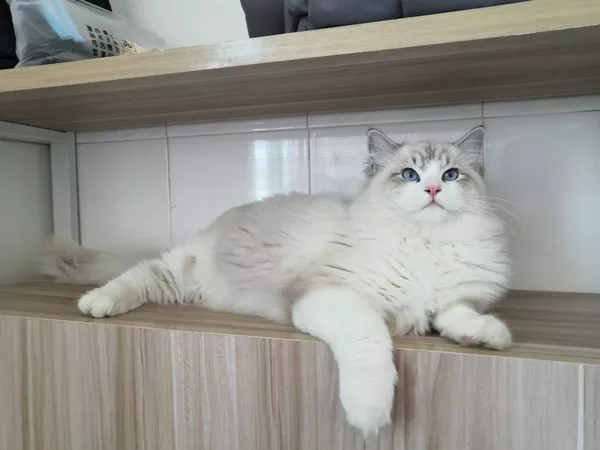Cats, with their retractable claws, use their nails for various purposes, from climbing and scratching to hunting and self-defense. As responsible cat owners, understanding the importance of nail care is paramount for your feline friend’s well-being. In this comprehensive guide, we explore the question, “How often should I trim my cat’s nails?” and delve into the intricacies of feline nail care to ensure your cat’s paws stay healthy and their claws remain in optimal condition.
The Role of Claws
Before delving into the specifics of nail trimming, it’s essential to comprehend the significance of claws in a cat’s life. Claws are not only instrumental in a cat’s daily activities but also play a crucial role in their overall health and behavior. Here are some key aspects of feline claws:
Natural Instincts: Cats have a natural instinct to scratch. Scratching serves various purposes, including marking territory, stretching muscles, and keeping the claws healthy.
Retractable Claws: Unlike dogs, cats have retractable claws that they can extend and retract as needed. This mechanism helps keep their claws sharp for hunting and climbing.
Territorial Marking: Scratching also allows cats to mark their territory. Glands in their paws release scent markers, establishing their presence in a particular area.
Emotional Well-being: Scratching is a form of stress relief for cats. It helps them release pent-up energy, frustration, and anxiety.
The Importance of Regular Nail Trimming
While scratching is a natural and healthy behavior, cat owners often find themselves asking, “How often should I trim my cat’s nails?” Regular nail trimming is crucial for several reasons:
Preventing Overgrowth: In some cases, a cat’s claws may not wear down naturally, leading to overgrowth. Overgrown claws can cause discomfort, affect mobility, and even lead to ingrown nails.
Avoiding Scratching Damage: Cats may inadvertently scratch furniture, carpets, or even their owners if their claws are too long. Regular trimming helps minimize the risk of accidental scratches.
Maintaining Paw Health: Long nails can affect a cat’s paw health. Overgrown claws may curl into the paw pads, causing pain and potential infection. Trimming ensures the overall well-being of your cat’s paws.
Promoting Positive Interactions: Cats with well-maintained nails are more likely to engage in positive interactions with their owners. Shorter claws reduce the likelihood of unintentional scratches during play or cuddle sessions.
Factors Influencing Nail Growth
The frequency of nail trimming depends on various factors, and understanding these factors can help you determine the appropriate trimming schedule for your cat. Consider the following:
Age: Kittens‘ nails tend to grow more rapidly than those of adult cats. Younger cats may require more frequent trimming during their growth phases.
Activity Level: Highly active cats that spend more time outdoors may naturally wear down their claws through climbing and exploring. Indoor cats, on the other hand, may need more regular trimming.
Diet and Health: A cat’s diet and overall health can influence nail growth. Nutrient-rich diets and good health contribute to optimal nail condition.
Scratching Surfaces: The availability of suitable scratching surfaces can impact nail growth. Providing scratching posts or pads allows cats to maintain their claws naturally.
Assessing Your Cat’s Nails: Signs It’s Time for a Trim
Observing your cat’s nails regularly is essential to gauge when it’s time for a trim. Look out for the following signs:
Audible Clicking: If you hear clicking sounds when your cat walks on hard surfaces, it may indicate that their nails are too long and need trimming.
Visible Curling: Long nails may start to curl, posing a risk of curling into the paw pads. Inspect your cat’s claws for any signs of curling.
Difficulty Retracting Claws: Cats should be able to retract their claws fully. If you notice any difficulty or if the claws are constantly visible, it’s a sign that trimming is necessary.
Scratching Damage: If your cat’s scratching is causing noticeable damage to furniture or surfaces, it’s an indication that their claws may need attention.
Tools for Nail Trimming: Choosing the Right Equipment
Before initiating the nail-trimming process, gathering the right tools is crucial. Having the appropriate equipment ensures a smoother and less stressful experience for both you and your cat. Here are the essential tools for nail trimming:
Cat Nail Clippers: Invest in quality cat nail clippers designed specifically for feline claws. Guillotine-style clippers and scissor-style clippers are common options.
Styptic Powder or Gel: Accidental nicks or cuts can happen during the trimming process. Having styptic powder or gel on hand helps stop bleeding in case of any minor injuries.
Treats and Positive Reinforcement: Associating nail trimming with positive experiences is key to a successful session. Have treats or favorite toys ready to reward your cat for good behavior.
Scratching Posts or Pads: Providing an outlet for natural scratching behaviors before and after trimming can help reduce stress and anxiety.
Steps for Stress-Free Nail Trimming
While some cats may resist nail trimming initially, incorporating positive reinforcement and gradual desensitization can turn it into a stress-free routine. Follow these steps for successful nail trimming sessions:
Familiarization: Introduce your cat to the nail clippers and other tools without initiating the trimming process. Let them sniff and explore the items.
Positive Associations: Associate the tools with positive experiences by offering treats or playtime during the familiarization phase.
Gradual Touch: Gently touch your cat’s paws, gradually progressing to touching their claws. Monitor their comfort level and proceed at their pace.
Short Sessions: Start with short nail-trimming sessions, focusing on one or two claws at a time. Gradually increase the duration as your cat becomes more comfortable.
Reward System: Use treats and positive reinforcement abundantly. Reward your cat immediately after a successful trimming session to create positive associations.
Patience and Calmness: Approach the process with patience and a calm demeanor. If your cat becomes stressed, take a break and resume later.
How Often Should I Trim My Cat’s Nails?
The frequency of nail trimming varies from cat to cat based on individual factors. However, as a general guideline, most cats benefit from nail trimming every 2–4 weeks. Regular checks of your cat’s claws will help you determine the appropriate schedule.
Tips for Nail Trimming Success
To ensure a successful and stress-free nail trimming experience, consider the following tips:
Choose the Right Time: Pick a time when your cat is relaxed and calm. Avoid attempting to trim their nails when they are agitated or after a vigorous play session.
Use Gentle Restraint: Hold your cat securely but gently during the trimming process. If your cat is resistant, enlist the help of a second person for additional support.
Stay Calm: Cats can sense their owners’ emotions. Maintain a calm and composed demeanor to help keep your cat at ease.
Focus on Positive Reinforcement: Shower your cat with praise, treats, and affection during and after the nail trimming session. Positive reinforcement creates a positive association with the process.
Check for Dewclaws: Some cats have dewclaws, which are located higher up on the leg. Ensure to check and trim these if present.
Consulting a Professional: When to Seek Veterinary Help
If you are unsure about trimming your cat’s nails or if your cat is particularly resistant, seeking professional help is a viable option. Veterinarians and professional groomers are experienced in handling nail trimming for cats and can provide guidance on the best practices.
Additionally, if you notice any of the following issues, consult with your veterinarian:
Ingrown Nails: If you suspect ingrown nails or if your cat displays signs of pain while walking, consult a veterinarian for proper assessment and care.
Abnormal Nail Growth: Unusual nail growth patterns or changes in nail color may indicate underlying health issues. A veterinary examination is essential in such cases.
Excessive Bleeding: If accidental bleeding occurs during nail trimming and persists despite the use of styptic powder or gel, consult your veterinarian for guidance.
See Also: Clipped Cat Nails Too Short: Reasons, Signs & Solutions
Conclusion:
In conclusion, the question “How often should I trim my cat’s nails?” is best answered through attentive observation of your feline companion’s individual needs. Regular nail trimming, coupled with positive reinforcement and a gentle approach, contributes to your cat’s overall paw health and well-being.
By understanding the significance of claws in a cat’s life and adopting a proactive approach to nail care, you can ensure that your cat’s paws remain healthy, their claws stay in optimal condition, and your bond with your feline friend thrives through paw-sitive experiences.

























